Thyroid conditions commonly affect middle-aged and senior pets, and early intervention is important to prevent significant health problems from impacting their quality of life. Our team at Stack Veterinary Hospital wants to help you recognize the signs by offering information about thyroid disease in pets.
An overview of thyroid disease in pets
The thyroid is a butterfly shaped endocrine gland in your pet’s neck that sits on either side of their trachea, and is responsible for making hormones that regulate your pet’s metabolism. Although thyroid disease is common in dogs and cats, they are affected by different conditions. Dogs typically suffer from inadequate thyroid hormone production (i.e., hypothyroidism), while cats usually experience an overactive thyroid gland (i.e., hyperthyroidism).
Thyroid disease in dogs
Hypothyroidism is a common endocrine disease, typically diagnosed in middle-aged dogs. The most common cause is immune-mediated lymphocytic thyroiditis, in which the dog’s body recognizes the thyroid as foreign and attacks the gland. This condition is a heritable trait. Another common cause is idiopathic thyroid gland atrophy, in which fat tissue replaces normal thyroid tissue. The reason behind this occurrence is not clear. Other causes include cancer and congenital abnormalities, but they are not common.
Thyroid disease signs in dogs
The thyroid gland is responsible for a wide variety of metabolic processes, and inadequate thyroid hormone production can lead to several clinical signs and blood work abnormalities, and can affect multiple systems. Clinical signs can be nonspecific and insidious at onset, making recognizing that their dog has a problem difficult for owners.
- Signs related to decreased metabolic rate — As the dog’s metabolism slows down, signs include lethargy, dull mentation, weight gain, and cold intolerance.
- Skin and hair coat changes — Signs that affect the skin and hair coat include hair loss, a dry, dull hair coat, scaling, hyperpigmentation, and recurrent skin or ear infections.
- Peripheral nervous system signs — Hypothyroidism occasionally causes issues that include facial nerve paralysis, megaesophagus, and cardiovascular abnormalities.
- Reproductive effects — In breeding dogs, hypothyroidism can cause abortions and lower birth weights.
Thyroid disease diagnosis and treatment in dogs
Blood tests to check your dog’s thyroxine (T4) and triiodothyronine (T3) values are performed to diagnose hypothyroidism, and other diagnostics, such as a complete blood count or biochemistry profile, may be needed to further assess your dog’s overall health. Hypothyroidism can be managed but not cured. Your dog will need a daily thyroid hormone supplement to keep their thyroid hormone levels normal and control their signs. Their dose may need adjusting, and their thyroid levels will be monitored regularly to ensure they are receiving the correct dose.
Thyroid disease in cats
Hyperthyroidism is a common endocrine disease diagnosed in middle-aged and senior cats that results in a thyroid hormone overproduction, usually caused by an adenoma (i.e., a benign tumor). In rare cases, a malignant adenocarcinoma can be the culprit. The reason these adenomas form is unknown, but possible contributing factors include deficiencies or excesses of certain compounds in the cat’s diet, and exposure to thyroid-disrupting chemicals in their environment or food.
Thyroid disease signs and complications in cats
Hyperthyroidism signs in cats include weight loss, increased appetite, increased thirst, restlessness, an increased heart rate, and a poor hair coat. Some cats also develop diarrhea and vomiting. If left untreated, hyperthyroidism can have serious consequences for cats.
- Cardiac issues — Hyperthyroidism causes an increased heart rate, as well as changes in the muscular wall of the heart, which can result in heart failure.
- Hypertension — Hyperthyroidism can cause an increase in blood pressure, which can lead to damage to several organs, including the eyes, kidneys, heart, and brain.
Thyroid disease diagnosis and treatment in cats
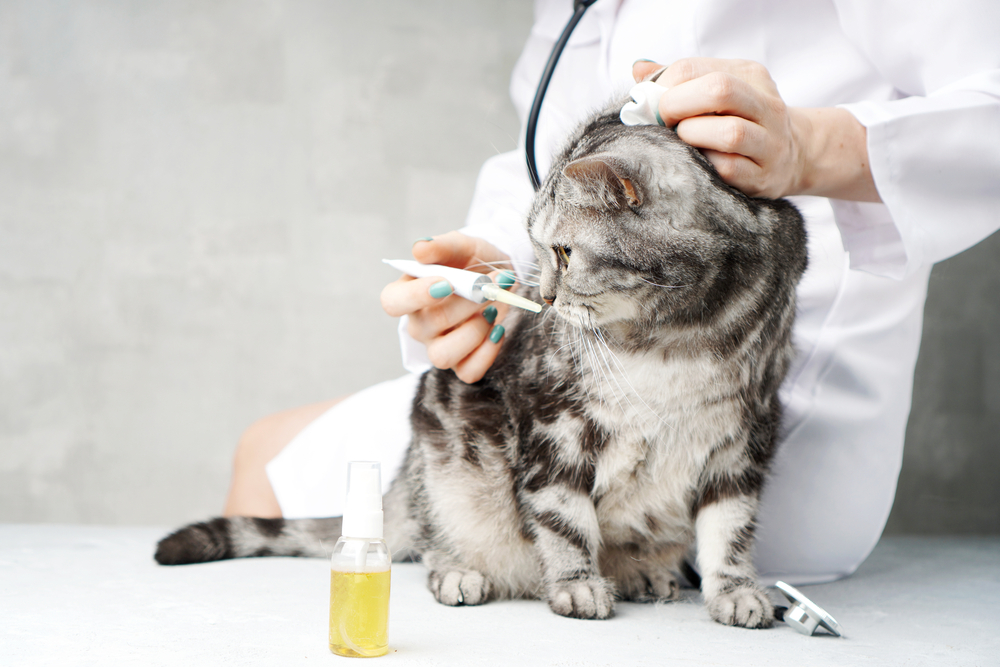
Blood tests can be performed to detect elevated T3 and T4 levels, and, if your cat is diagnosed with hyperthyroidism, their blood pressure should also be assessed. In addition, blood and urine tests may be recommended to rule out kidney and heart issues. Several treatment options are available to treat hyperthyroidism.
- Antithyroid drug therapy — Medications are available that reduce thyroid hormone production. To maintain control of the disease, your cat will need daily treatment for the remainder of their life, and their dose may need adjustments over time.
- Surgical thyroidectomy — The affected thyroid tissue can be surgically removed to provide a permanent cure. Your cat’s thyroid levels will need monitoring after surgery, to ensure their levels remain normal.
- Radioactive iodine therapy — Radioactive iodine can be injected, and the iodine will be absorbed by the abnormal thyroid tissue, destroying the tumor. This treatment is curative in about 95% of hyperthyroid cats.
- Dietary treatment — Another treatment option is to feed hyperthyroid cats a special diet with strictly controlled iodine levels. The thyroid gland uses iodine to make thyroid hormones, so by keeping the iodine levels at a particular level, only enough is available to produce normal hormone levels.
Thyroid disease can cause significant problems for your pet, but by diagnosing their condition early, the disease can be managed or treated appropriately, before they suffer serious issues. The best way to catch these conditions in the early stages is regular wellness checks for your pet.
If you would like to schedule a wellness examination, or if your pet is exhibiting signs related to thyroid disease, contact our American Animal Hospital Association (AAHA)-accredited team at Stack Veterinary Hospital, so we can ensure your pet is as healthy as possible.


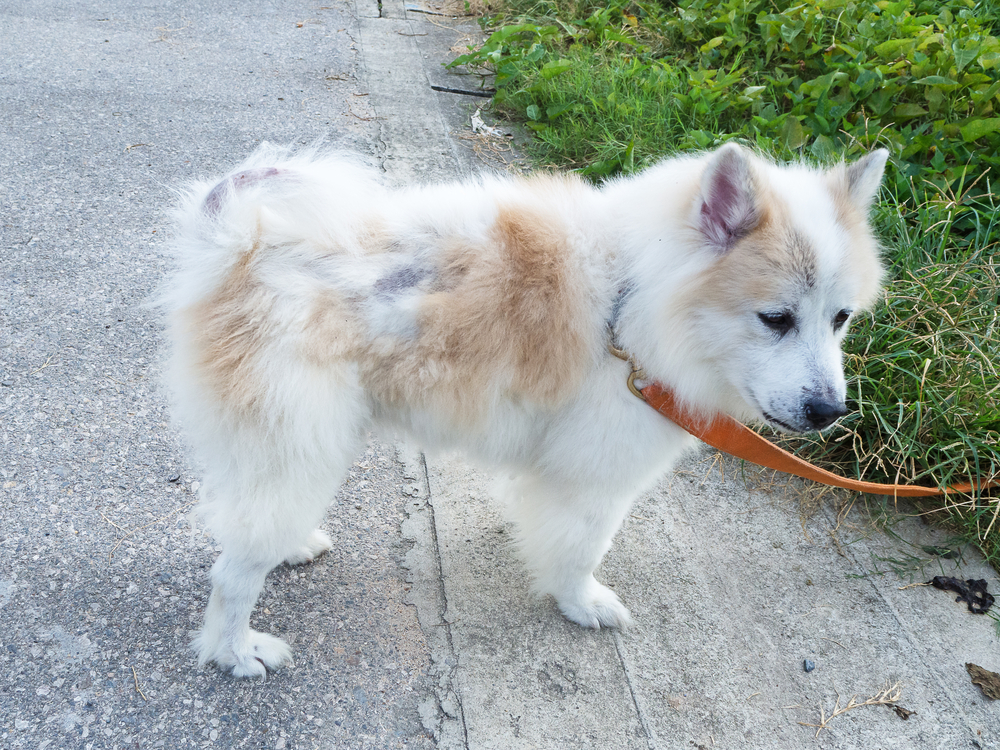
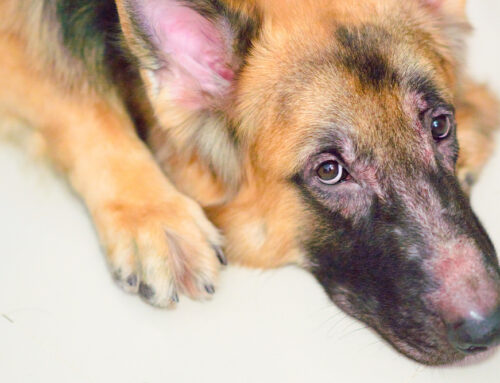
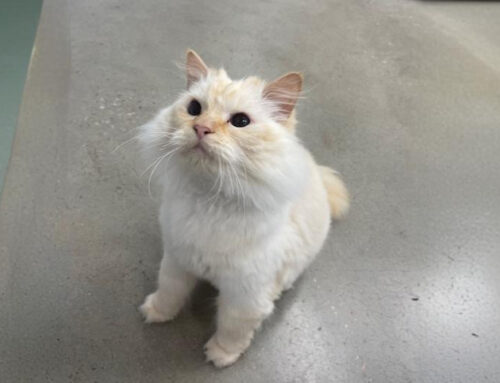
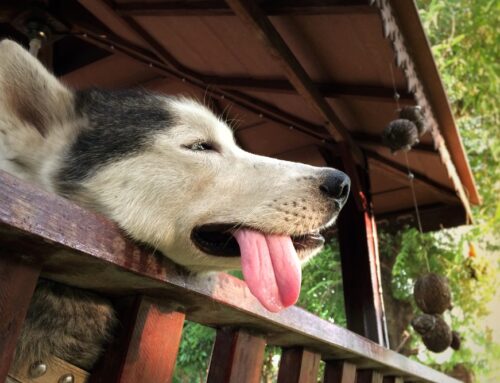

Leave A Comment